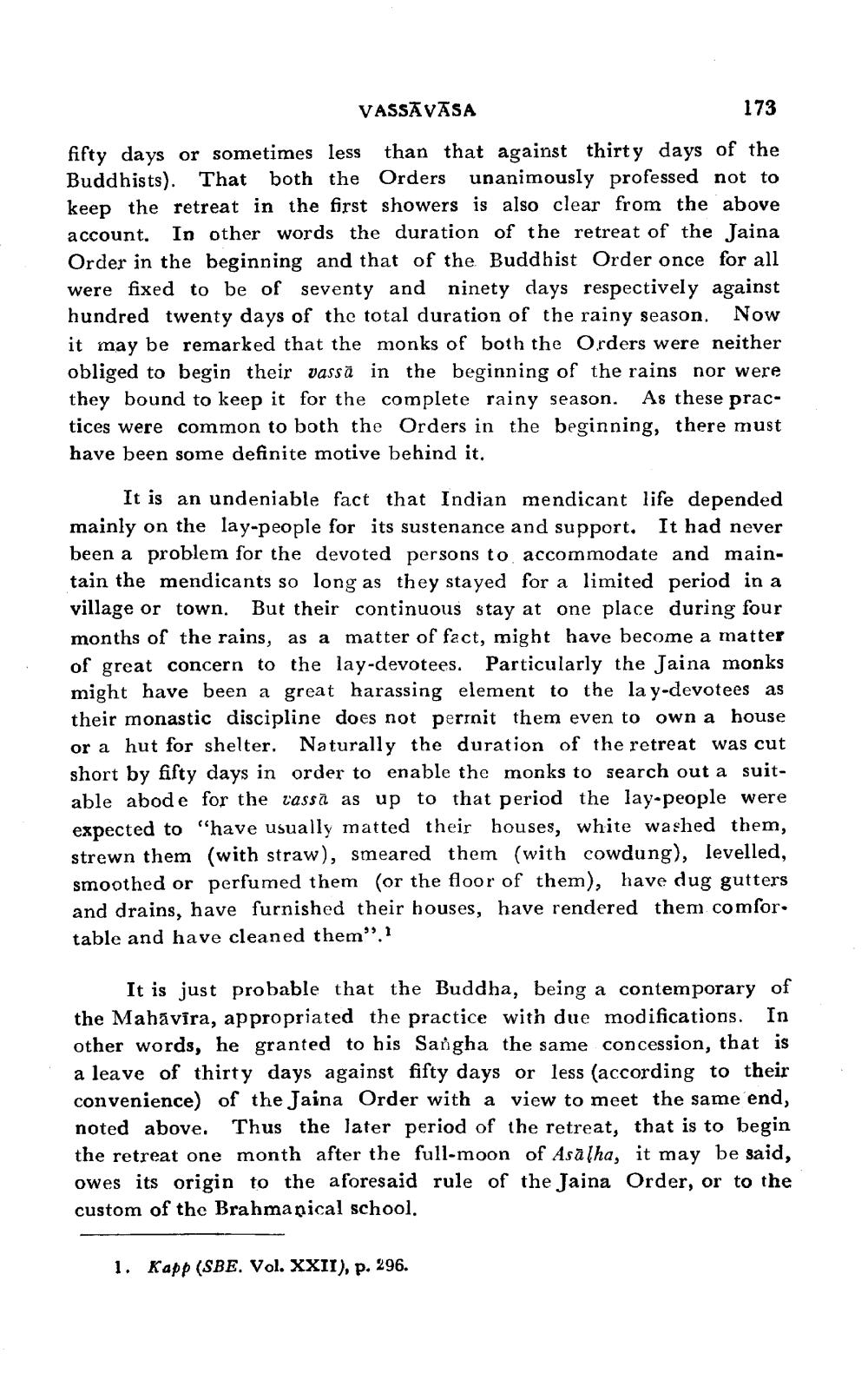________________
VASSĀVĀSA
173
fifty days or sometimes less than that against thirty days of the Buddhists). That both the Orders unanimously professed not to keep the retreat in the first showers is also clear from the above account. In other words the duration of the retreat of the Jaina Order in the beginning and that of the Buddhist Order once for all were fixed to be of seventy and ninety days respectively against hundred twenty days of the total duration of the rainy season. Now it may be remarked that the monks of both the Orders were neither obliged to begin their vassă in the beginning of the rains nor were they bound to keep it for the complete rainy season. As these practices were common to both the Orders in the beginning, there must have been some definite motive behind it.
It is an undeniable fact that Indian mendicant life depended mainly on the lay-people for its sustenance and support. It had never been a problem for the devoted persons to accommodate and maintain the mendicants so long as they stayed for a limited period in a village or town. But their continuous stay at one place during four months of the rains, as a matter of fact, might have become a matter of great concern to the lay-devotees. Particularly the Jaina monks might have been a great harassing element to the lay-devotees as their monastic discipline does not perrnit them even to own a house or a hut for shelter. Naturally the duration of the retreat was cut short by fifty days in order to enable the monks to search out a suitable abode for the cassă as up to that period the lay people were expected to "have usually matted their houses, white washed them, strewn them (with straw), smeared them (with cowdung), levelled, smoothed or perfumed them (or the floor of them), have dug gutters and drains, have furnished their houses, have rendered them comfor. table and have cleaned them".
It is just probable that the Buddha, being a contemporary of the Mahavira, appropriated the practice with due modifications. In other words, he granted to his Sangha the same concession, that is a leave of thirty days against fifty days or less (according to their convenience) of the Jaina Order with a view to meet the same end, noted above. Thus the later period of the retreat, that is to begin the retreat one month after the full-moon of Asalha, it may be said, owes its origin to the aforesaid rule of the Jaina Order, or to the custom of the Brahmapical school.
1. Kapp (SBE. Vol. XXII), p. 296.




